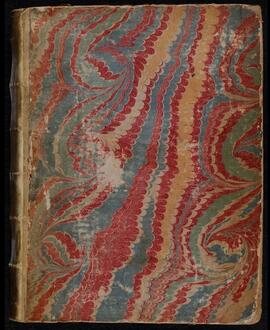This collection is a comprehensive record of the life and work of Maurice Walsh, a figure who has a distinctive place in Irish literary history. At its core are multiple working drafts of his fourteen novels, five short story collections and other works which provide a window into Walsh’s creative process and the evolution of his narratives. They also highlight the breadth and versatility of Walsh’s literary output which extended from novels and short stories to plays, poetry and journalism. Of particular interest are drafts of his perhaps best-known novel, Blackcock’s Feather (P7/2/1/3/1-7), his short story ‘The Quiet Man’ (P7/2/2/1/3/1-5), later made into an Oscar-winning film directed by John Wayne, and the collection of short stories featuring the immortal character of Thomasheen James (P7/2/2/2/1-11).
The Maurice Walsh Papers also feature the author’s extensive correspondence with literary agents, publishers, broadcasting companies and film producers which provides interesting insights into the life of a professional writer. It reveals among other things the controversy concerning the sale of the film rights which proceeded the production of Trouble into Glen, Walsh’s only novel successfully adapted for film (see P7/1/3/1/2 and P7/1/3/2/1). The dispute, which involved Walsh’s American literary agents, Brandt and Brandt of New York, and his principal publishers on this side of the Atlantic, Chambers, resulted in his refusal to assist in the making of the film and soured his view of the movie business for life. Another interesting set of correspondence dates from 1940, when Walsh made a significant foray into politics by collaborating with Seán O’Faoláin in the writing of an article entitled ‘Ireland in a Warring Europe’. Published in The Saturday Evening Post, the article was a defence of Irish neutrality and generated much reaction. The surviving letters from Joseph Connolly, the censor, indicate the extent to which he tried to avoid undue alterations to the text and the keenness of the authorities that the piece should appear in print (P7/1/2/4/1-4).
The volume of correspondence includes much evidence of Walsh’s popularity. The royalty statements from his publishers and agents tangibly prove his success as a writer, and the letters from admirers (P7/1/2/3/3/1-7) give his audience a human face. One of the more unusual expressions of his fame was the establishment of ‘The Ancient and Honorable Society of Walshians’ in Montana in 1933 (P7/1/2/3/2/1-5).
With the exception of some official documents and a small number of photographs, the collection contains little in relation to Maurice Walsh’s personal life. The best insight into this aspect can be found in a short autobiographical note published in an unidentified work (see P7/2/7/5/5), which also shows Walsh’s gentle but brimming humour. Described by his friends as ‘quiet, easy-going, lazy-seeming’, Walsh’s reticence made him, perhaps, the true embodiment of ‘The Quiet Man’.
Ohne Titel